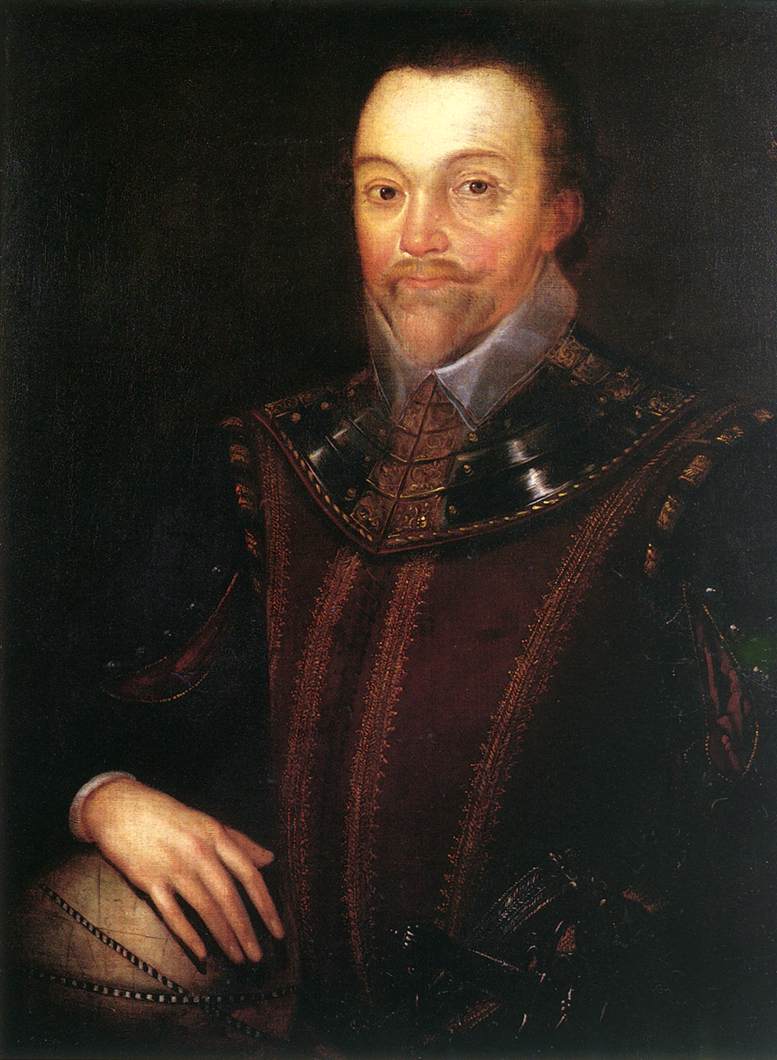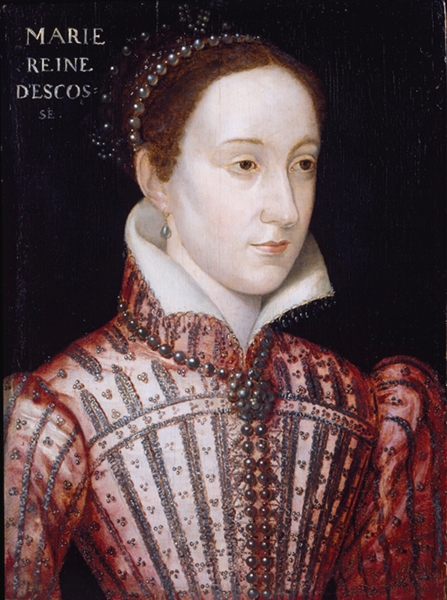1559 - Elizabeth I is crowned Queen of England and Ireland at Westminster Abbey
 |
| The 25-year-old Queen in her coronation robes. |
Elizabeth Tudor had actually become Queen on November 17, 1558 upon the death of her childless half-sister, Mary I, but this ceremony marked Elizabeth's official crowning and anointing as a reigning monarch before her people. It was a mix of traditional Latin and new Protestant elements. She was crowned by Owen Oglethorpe, the Catholic Bishop of Carlisle (the only Bishop prepared to conduct the ceremony), and parts of the service were conducted twice - in Latin and English. The firmly Protestant Elizabeth instructed Oglethorpe not to elevate the Host (or sacramental bread), but he did so anyway, inciting the Queen's displeasure, which resulted in him losing his position. Aside from this, she emerged from the Abbey smiling and with a throng of crowds cheering her on as she carried the orb and sceptre - symbolic of the authority of her office.
Elizabeth would go on to reign for 44 years, and this longevity produced a measure of stability for her kingdom in the wake of the short reigns of her half-brother Edward VI, her cousin Lady Jane Grey, and her half-sister Mary I. This period became known as the Elizabethan Era, which was marked the seafaring adventures of people like Sir Francis Drake and the early attempts of North American colonization by Sir Walter Raleigh, as well as by a renaissance in English art and literature, led by figures such as the playwright William Shakespeare.
It was also a period of religious struggle and tension between various factions of Catholics and Protestants following the Reformation, which resulted in the Elizabethan Settlement and the establishment of the Church of England, which adopted a Catholic appearance and Protestant doctrine with Elizabeth as Supreme Governor. This religious struggle was a source of her troubles with her Catholic cousin, Mary, Queen of Scots, and partly lead to the attempted Catholic Spanish invasion of Protestant England, which failed when the Spanish Armada was defeated. The English victory further enhanced Elizabeth's standing among her people as Gloriana and Good Queen Bess.
She was also famously known as the Virgin Queen for not marrying and producing an heir, which resulted in her becoming the last Tudor monarch. Upon her death in 1603, she was succeeded by her cousin, James VI of Scotland (son of Elizabeth's rival, Mary) of the House of Stuart, who became James I of England and Ireland.
1945 - Birth of Princess Michael of Kent
 |
| Princess Michael of Kent in a photograph by Allan Warren. |
Today marks the 69th birthday of Princess Michael of Kent, the wife of Prince Michael of Kent, who is a first cousin of the Queen. She was born as Marie Christine von Reibnitz in Carlsbad (now known as Karlovy Vary), in the Sudetenland of what is now the Czech Republic. Being a descendant of generations of European royalty, she has been titled as a Baroness throughout her life.
She married Prince Michael in a civil ceremony in 1978, following the annulment of her first marriage to a British banker, Thomas Troubridge, and upon receiving permission from Pope John Paul II, the couple were married in a Roman Catholic ceremony in 1983. Prince and Princess Michael have two children: Lord Frederick Windsor (1979) and Lady Gabriella Windsor (1981). By marrying a Catholic, Prince Michael forfeited his rights to succeed to the thrones of the Commonwealth realms, though his children remain in the line of succession since they have been raised as Protestants.
Along with her husband, Princess Michael does not carry out regular royal duties, and does not receive public funding from HM Government. However, she has represented the Queen and other working members of royal family on some occasions, such as attending the independence celebrations in Belize in 1981 with her husband. In 2011, she presided over the launching ceremony of the Green Pilgrimage Network in Assisi, Italy on the behalf of Prince Philip, who founded the Alliance of Religions and Conservation, which organized the Network. In addition, she has supports Prince Michael in his work as the Patron of several organizations. In recognition of the charity work and limited royal engagements, the couple have received some financial support from the Queen's personal funds.
As a devout Catholic, she was a high-profile attendee of events marking Pope Benedict XVI's visit to the United Kingdom in 2010, including a Mass at Westminster Cathedral.
In her professional life, Princess Michael has been an interior decorator, and is the author of four books (three nonfiction and one fiction). Her most recent book - a novel named The Queen Of Four Kingdoms - was released in 2013.
1991 - Victoria Cross for Australia is created by Elizabeth II
 |
| Obverse of the medal for the Victoria Cross |
It was on this day in 1991 that Elizabeth II, Queen of Australia signed letters patent which instituted the Victoria Cross for the sole use of Australians as part of that country's honors system. The Victoria Cross was established by Queen Victoria in 1856 as the highest military award for valor "in the face of the enemy" to members of the armed forces in countries throughout the British Empire and later, the Commonwealth. In the later 20th Century, some Commonwealth countries developed their own honors systems independent of the British/Imperial orders, and it became necessary to create new awards and decorations that were the equivalent of the ones issued from the UK. With the Queen's letters patent, Australia became the first Commonwealth realm to create its own version of the Victoria Cross, which is the highest award in the Australian Honors System.
Photo Credit: Allan Warren via Wikimedia Commons cc, Richard Harvey via Wikimedia Commons cc






